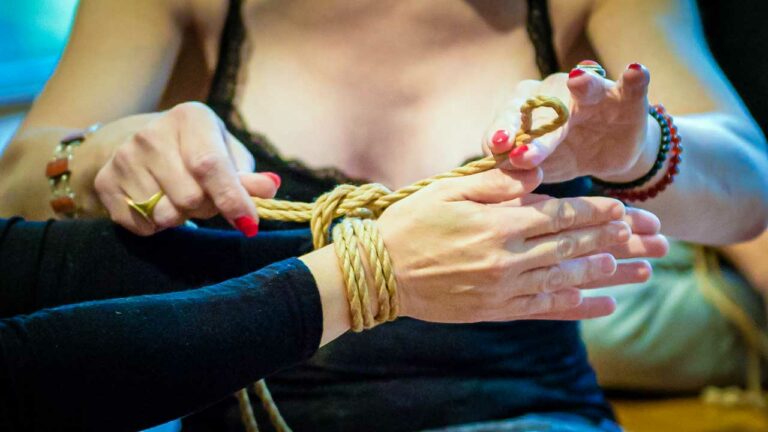

Kinbaku (緊縛) Shibari (縛り). At Nawakai, our primary focus revolves around the following definition: The essence of Kinbaku (緊縛) lies in exposing the model’s vulnerability to derive pleasure, a concept articulated in Japanese as Hazukashii (恥ずかしい). Achieving a high-level Kinbaku involves revealing the hidden emotions of the model, intertwined with the pleasure of being in that state, making it a profound artistic expression.
Kinbaku (緊縛) or Shibari (縛り) is a Japanese art form involving the use of ropes to tie a person. There are likely as many definitions as there are practitioners, each corresponding to specific practices and distinct objectives. Aesthetic exploration, showcasing the partner’s body, and unveiling emotions are commonly shared goals. Kinbaku can also encompass activities such as dance, massage, diverse sexual expressions, and even meditation.


The diversity of approaches in Kinbaku practice allows for a rich exploration of psychological, emotional, and aesthetic aspects. It transcends mere rope knots to become a complex and profound form of artistic expression. Through Kinbaku, practitioners can achieve an intimate connection with their partners, elevating this art form beyond physical constraints to explore the most intimate corners of the human experience. At Nawakai, we are committed to deepening and respecting this tradition, fostering a holistic understanding of Kinbaku (緊縛) or Shibari (縛り) in all its dimensions.

